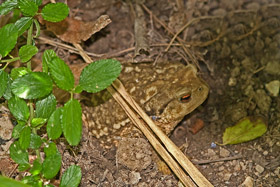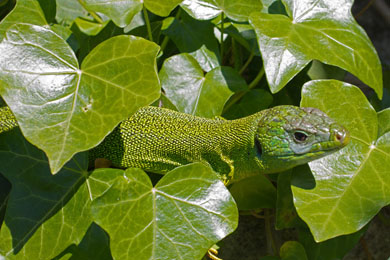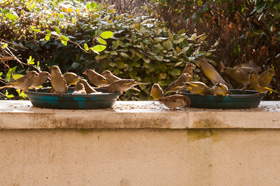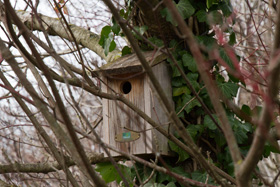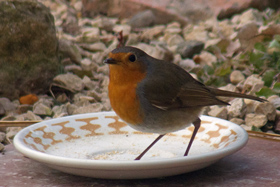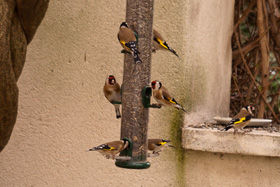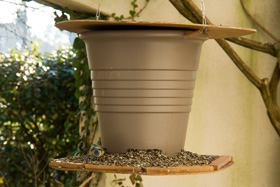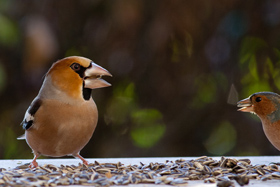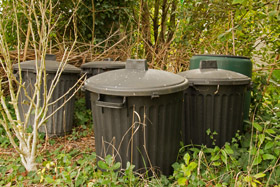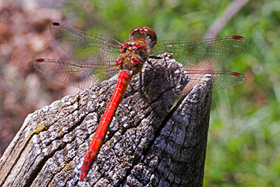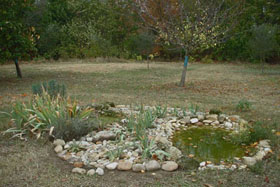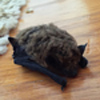A little untidiness in the garden is a good thing for wildlife. Your entire garden doesn’t need to be a tip, but there is certainly room, especially in a large garden, for a soupçon of untidiness here and there. Strategically-placed heaps of stones provide shelter and sunbathing areas for lizards and damp places for toads to hide. Woodpiles in distant corners are a boon for fungi, micro-organisms and insects which feed on decaying wood, as well as providing winter shelters for small mammals and even, if you’re lucky, hedgehogs. Leave hollow-stalked flowers as over-wintering shelter for insects, or collect them in bundles, tie them together and put them in an out-of-the-way corner. Or, you can make an “insect hotel” by drilling different-sized holes in an old stump of wood.
Gardening for wildlife : Helping Nature
Putting up nest-boxes may encourage more birds into your garden. Make sure your box is adapted to the type of bird you want to attract. It should be placed in a quiet corner about 2 metres off the ground. Make sure there are no nearby branches which will encourage predators. The nest-box should be sheltered from prevailing winds and direct sun and should not be in dense shade. Here in Mediterranean areas, particularly where the mistral blows 100 days out of 365, this means effectively that your nest-box will be best facing east. Boxes should be cleaned out and disinfected in late winter so as to get rid of any overwintering parasites. If your box remains unused for three successive years, change its location.
However many fruiting shrubs and trees you may plant, it’s likely that in winter there will be a shortage of food for birds. Putting up a bird-table or hanging feeders will not only be a lifeline for your garden birds, but will also provide you with close-up views and excellent photo opportunities. Sunflower seeds are probably the best all-purpose food: our feeders regularly attract dozens of goldfinches (greedy hooligans), greenfinches, chaffinches (though these prefer to feed on the ground), blue-tits and great-tits, sparrows, and the odd discreet dunnock or blackcap. Robins prefer porridge oats. And occasionally, if weather conditions are favourable, we’re rewarded by the sight of a hawfinch or brambling. Don’t forget to provide water regularly, as winter is often dry in Mediterranean areas. Leave fallen fruit on the ground, as they are much appreciated by blackbirds and small or large mammals. Click here for more information about Mediterranean birds you are likely to spot in your garden.
A nice warm compost heap is a magnet for all kinds of insect-life and small mammals such as shrews. For information on composting, see here.
EASY COMPOSTING
Compost containers can be bought in all shapes and sizes, but here’s an easy and inexpensive solution. Buy an ordinary black or green plastic dustbin (with a lid), cut the bottom out with a jigsaw and simply put the dustbin directly on the ground in an out-of-the-way corner. Then fill it up with your green waste from the kitchen and garden. In the hot Mediterranean climate, the plastic keeps in the moisture and encourages the process of composting.
The dustbins are light and easy to manage: when you want to retrieve the compost, simply tip the bin over.
Remember to compost fallen leaves separately: these take longer to break down than ordinary green waste from garden or kitchen.
Ponds are always recommended as great attractors of wildlife, but my experience of pond-building in a Mediterranean climate has been mixed. The great problem has been a proliferation of mosquitoes, not entirely dealt with by the bats which live in our oak tree. One possible remedy: a small solar fountain which keeps the water moving, since mosquitoes are said to prefer stagnant water. Another problem has been, inevitably, evaporation of the water and the need for constant refilling in the summer. And then there’s the problem of algae that proliferate in the heat. So it’s been a struggle. However the up-side is that our pond supports a number of dragonflies which are not only beautiful, but are also extremely efficient predators. So I’m sticking with it for the time being.
BATS
One day, our cat brought in a dead bat, causing instant panic because European bats can carry a rabies virus which can be transmitted to other animals and human beings, though such cases are extremely rare. We contacted the Direction Départementale des Services Vétérinaires in our département and the bat was sent off to the Pasteur Institute in Paris for analysis. Fortunately, the results were negative. Huge sigh of relief.
However there’s no reason to panic if you have bats in your attic or garden. Normally, contact with humans only occurs when a bat is wounded or exhausted and can’t fly. If you’re worried, specialist associations can give you advice on how to cohabit peacefully with them. A vet can help you contact one of these associations.
If you do find a wounded or exhausted bat on the ground, it’s best not to touch it. Bats are protected by European legislation, and only officially-designated experts may capture, collect or transport them. Contact a vet who will put you in touch with one of these experts. Also contact a vet if you find a dead bat. If by bad luck you’re bitten, wash the wound with hot soapy water, apply antiseptic and
contact your doctor immediately.
